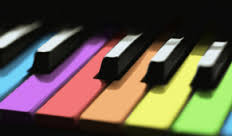Make Sure To Learn Chords & Music Theory!
Piano Lessons: Make Sure They Include
Chords & Music Theory!

Though teaching styles always vary from instructor to instructor, piano instruction generally covers the same basic areas: fingering, , music reading, scales, technique, and sight reading. The early lessons will cover fingering and posture, making sure the student knows how to hold his or her hands and where to put them on the keys; series of scales practiced repeatedly will be the basis of this area. Piano instruction will then move on to notation essentials, starting with the basics of notes and key signatures and time signatures and then moving forward to more advanced concepts in rhythm, tempo and dynamics.
Piano Lessons: Make Sure They Include
Chords & Music Theory!
   Â
Many of these concepts are introduced into the piano instruction while the student is learning to read music, a practice that runs through the entire course of the piano instruction. Teachers will assign short, easy pieces to kick start the student’s music reading knowledge and eventually move forward to more advanced pieces. Sight reading, the ability to play a piece of music without ever having seen it, is sometimes placed sporadically throughout the piano instruction, after a student is fairly well-versed in reading music.
One crucial element of piano playing that is often left out of traditional piano lessons is the study and practice of chords and music theory. To learn to read music without understanding the theory behind the music and the chords and chord progressions that form the music is almost like teaching a surgeon to cut without understanding the human anatomy and it’s interrelated parts. The student will be able to play the piano from a piece of sheet music, but take that music away or have it blow off the piano and he or she is immediately in big trouble.
There is a famous anecdote about a lady who was a concert pianist and could impress people with her playing, yet when asked to play “Happy Birthday” at a party had to decline with great embarrassment because she didn’t have sheet music for the song handy. To be tied to the written music is a shame, when learning chords and music theory adds so much to the value of piano instruction.
Given a healthy dose of music theory and chord instruction mixed in, all of the other elements of piano instruction eventually begin to work hand in hand. Piano instruction then becomes an intricate web of gaining bits of detailed knowledge little by little and understanding the music that’s being played without fully realizing that it’s being gained.
Having access to piano lesson videos greatly speeds up the learning curve, so whether you take private lessons or do it on your own, try to latch on to some piano lesson videos. They will save you lots of time and make fingering and chords much clearer.
Then playing the piano becomes more fun and a joyful event that can be shared with full understanding of the theory and form that lies behind each song.
Original article  at https://www.playpiano.com/Articles/26-musictheory&chords.htm


